An international research team has for the first time designed realistic photonic time crystals –– exotic materials that exponentially amplify light. The breakthrough opens up exciting possibilities across fields such as communication, imaging and sensing by laying the foundations for faster and more compact lasers, sensors and other optical devices.
Tag: Lasers
High-Voltage Gun Accelerates Electrons from Zero to 80 … Percent the Speed of Light
Scientists at the U.S. Department of Energy’s (DOE) Brookhaven National Laboratory have designed and tested the world’s highest voltage polarized electron gun, a key piece of technology needed for building the world’s first fully polarized Electron-Ion Collider (EIC).
Bubbling, frothing and sloshing: Long-hypothesized plasma instabilities finally observed
PPPL scientists have observed new details of how plasma interacts with magnetic fields, potentially providing insight into the formation of enormous plasma jets that stretch between the stars.
ETRI Pioneers Mass Production of Quantum Dot Lasers for Optical Communications
South Korean researchers have successfully developed technology to mass-produce quantum dot lasers, widely used in data centers and quantum communications. This breakthrough paves the way for reducing the production cost of semiconductor lasers to one-sixth of the current cost.
UC Irvine-led research team discovers new property of light
Irvine, Calif., May 6, 2024 – A research team headed by chemists at the University of California, Irvine has discovered a previously unknown way in which light interacts with matter, a finding that could lead to improved solar power systems, light-emitting diodes, semiconductor lasers and other technological advancements.
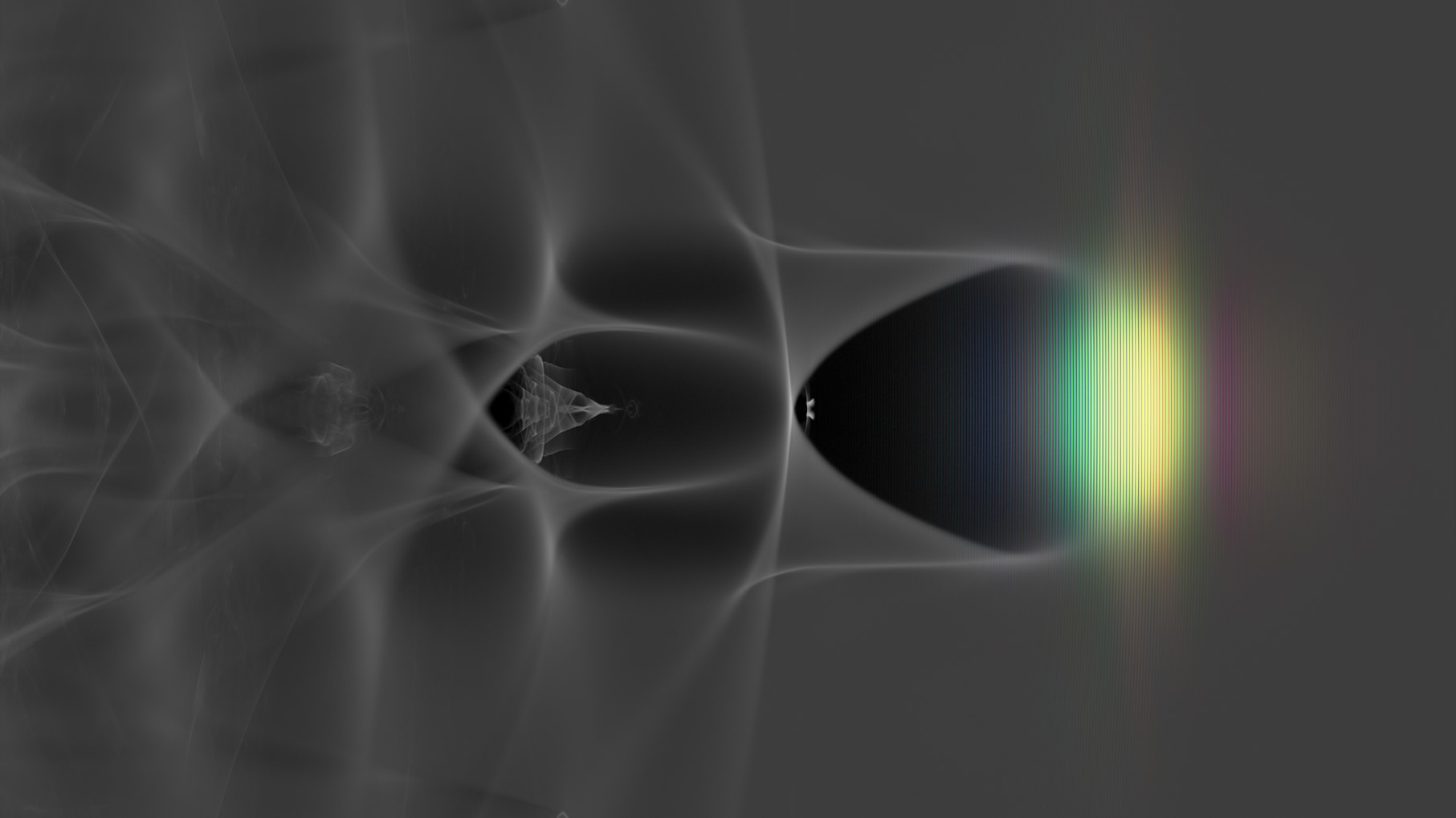
LLNL leads initiative to advance muon-based imaging
Scientists at Lawrence Livermore National Laboratory (LLNL) are working to change the speed of muon-based imaging with a new initiative called Intense and Compact Muon Sources for Science and Security (ICMuS2).
Blast away defects with lasers
A new laser-based process chain has been developed to fabricate fused silica optics. It uses a CO2 laser to ablate the surface of the optics for the precise removal of subsurface mechanical damage.
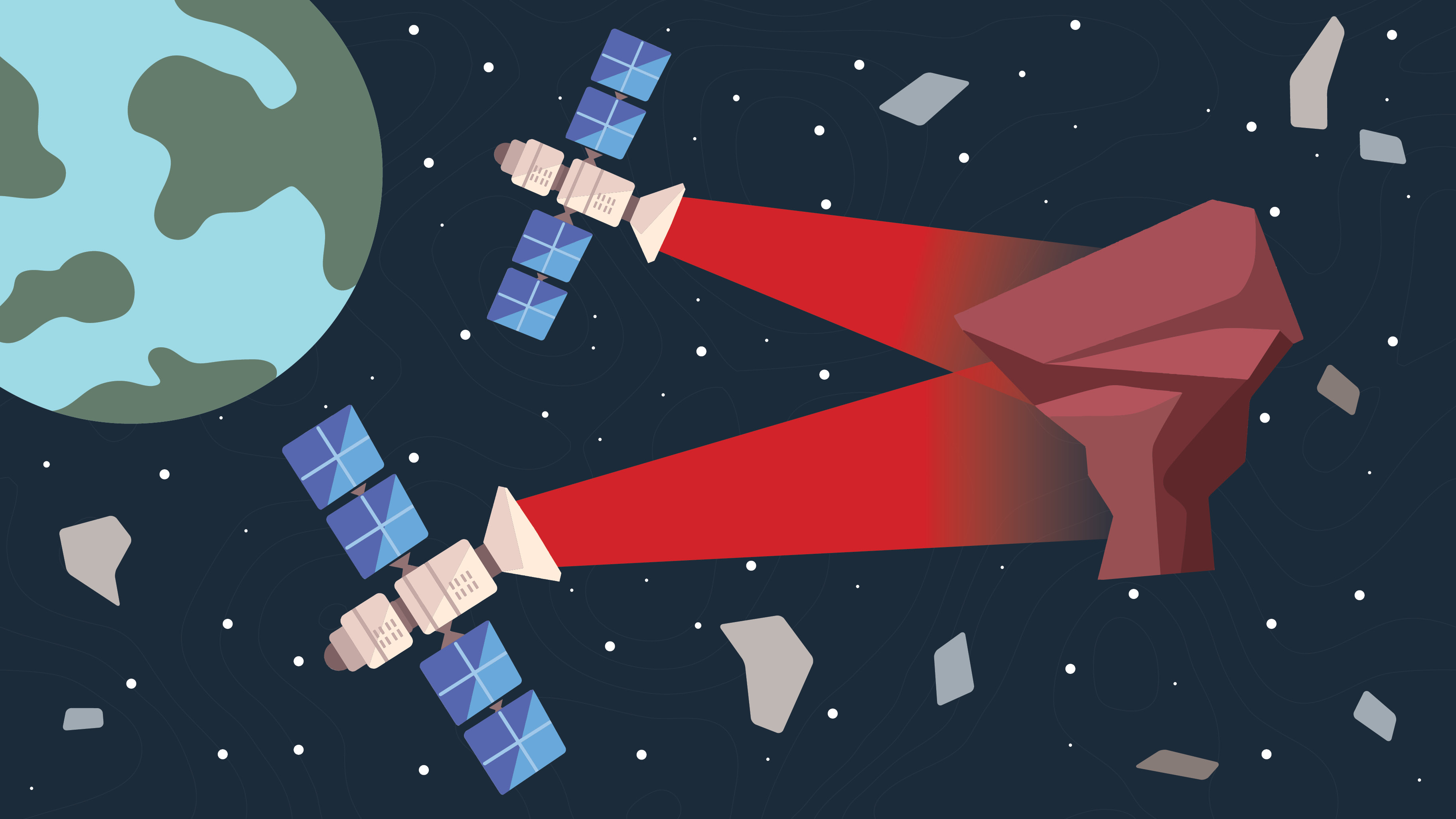
Engineer developing laser system to defend space assets from debris in Earth’s orbit
If West Virginia University research pays off, debris that litters the planet’s orbit and poses a threat to spacecraft and satellites could get nudged off potential collision courses by a coordinated network of space lasers.
Intense lasers shine new light on the electron dynamics of liquids
The behavior of electrons in liquids plays a big role in many chemical processes that are important for living things and the world in general. For example, slow electrons in liquid have the capacity to cause disruptions in the DNA strand.
Ionic Liquids’ Good Vibrations Change Laser Colors with Ease
Scientists have found a variety of ways to convert one color of laser light into another. In a study just published in the journal Physical Review Applied, scientists at the U.S. Department of Energy’s (DOE) Brookhaven National Laboratory demonstrate a new color-shifting strategy that’s simple, efficient, and highly customizable.
The Burn Center at MedStar Washington Hospital Center Performs its 1,000th Laser Procedure Milestone for Burn Scars
The Burn Center at MedStar Washington Hospital Center has performed its 1,000th laser scar revision procedure. As the Washington region’s only Burn Center, it is the only facility in the Washington, D.C., area with the specialized laser equipment and expertise to treat hypertrophic scars caused by burns.
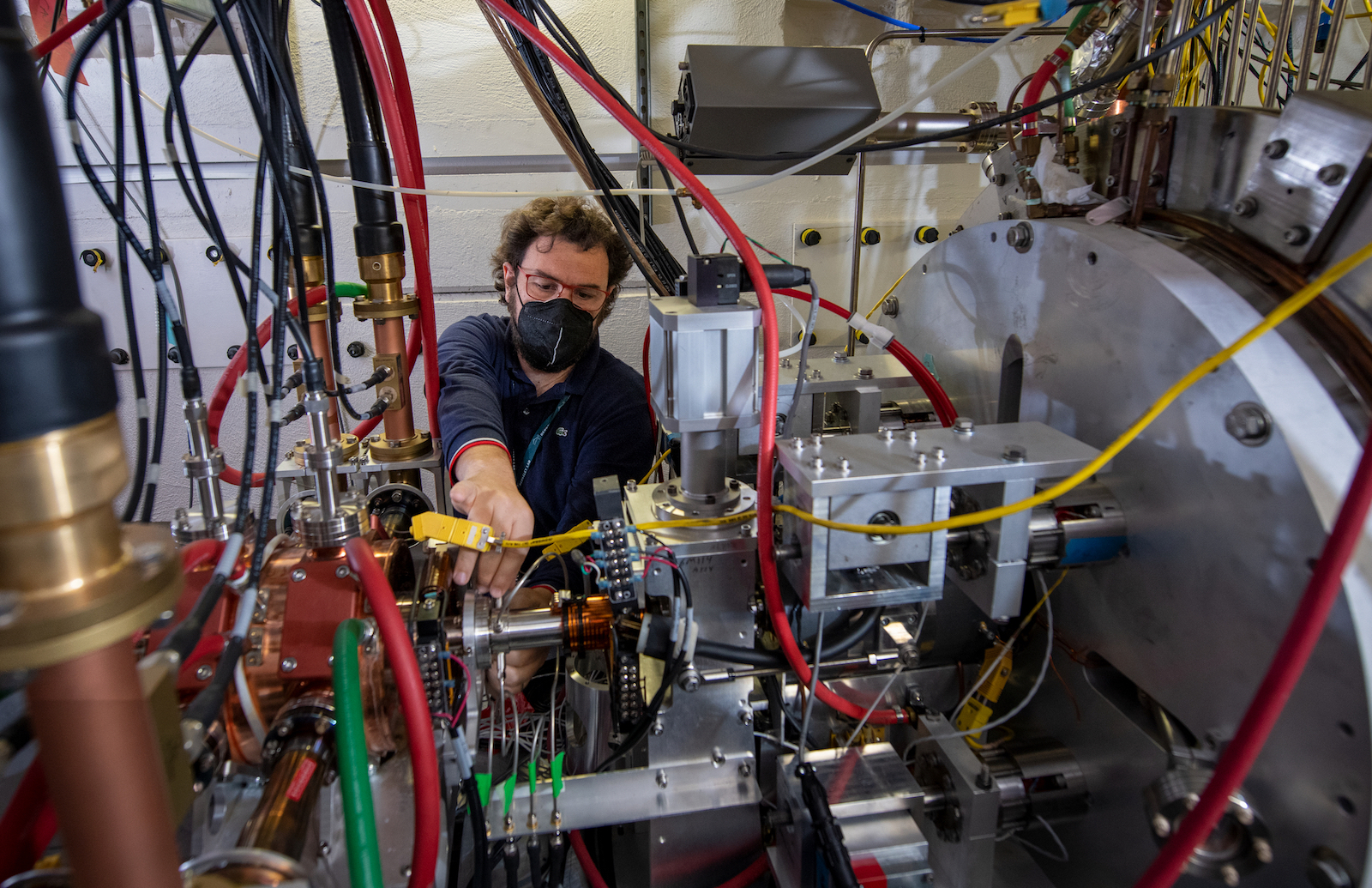
Machine Learning Paves Way for Smarter Particle Accelerators
Scientists have developed a new machine-learning platform that makes the algorithms that control particle beams and lasers smarter than ever before. Their work could help lead to the development of new and improved particle accelerators that will help scientists unlock the secrets of the subatomic world.
Andreas Kemp: Then and Now / 2012 Early Career Award Winner
At Lawrence Livermore National Laboratory, Andreas Kemp studies the interaction of intense, extremely short laser pulses with matter. This new field of research studies extreme nuclear physics reactions at rates far higher than those of current accelerator experiments.
LLNL explores laser beam shaping to improve metal 3D printing
Researchers at Lawrence Livermore National Laboratory are addressing the issue of porosity and other phenomenon that causes defects in metal 3D printing by exploring alternative shapes to the Gaussian beams commonly employed in high-power laser printing processes such as laser powder bed fusion (LBPF).
Three PPPL scientists win competitive awards to conduct frontier plasma science work
World-class expertise in the study of plasma — the hot, charged state of matter composed of free electrons and atomic nuclei, or ions, that makes up 99 percent of the visible universe — has won frontier science projects for three physicists at PPPL.
Paving the path to electrically pumped lasers from colloidal-quantum-dot solutions
In a new review article in Nature Photonics, scientists from Los Alamos National Laboratory assess the status of research into colloidal quantum dot lasers with a focus on prospective electrically pumped devices, or laser diodes.
Lighting Up Ultrafast Magnetism in a Metal Oxide
Scientists studied what happens when very short pulses of laser light strike a magnetic material. Understanding how magnetic correlations change over short timescales is the first step in being able to control magnetism for applications.

Smashing gold with finesse: Shockless compression experiments at the National Ignition Facility establish new terapascal pressure scales
An international team of researchers, including scientists from Lawrence Livermore National Laboratory (LLNL), Sandia National Laboratories and the University of Hyogo, have used the world’s most energetic laser – LLNL’s National Ignition Facility (NIF) in Livermore, California – and the world’s most powerful pulsed-power facility – Sandia’s Z Machine in Albuquerque, New Mexico – to compress gold and platinum compress to 1 terapascal, deriving new pressure scales.
Experiments validate the possibility of helium rain in Jupiter and Saturn
An international team of researchers, including scientists from Lawrence Livermore National Laboratory, the French Alternative Energies and Atomic Energy Commission, the University of Rochester and the University of California, Berkeley, detail experimental evidence validating the existence of helium rain inside of planets like Jupiter and Saturn, supporting a nearly 40-year-old hypothesis.
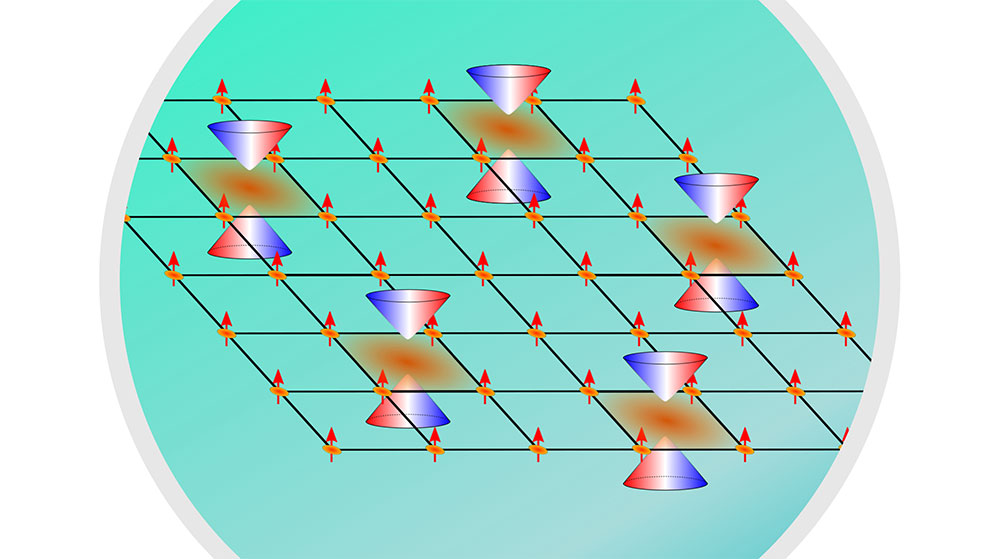
Magnetism Meets Topology on a Superconductor’s Surface
Scientists have found an energy band gap—an energy range where no electrons are allowed—opens at a point where two allowed energy bands intersect on the surface of an iron-based superconductor. This unusual electronic energy structure could be used for quantum information science and electronics.
Giant lasers compress iron oxide, revealing the secret interior structure of rocky exoplanets
Advances in astronomical observations have resulted in the discovery of an extraordinary number of extrasolar planets, some of which are believed to have a rocky composition similar to Earth. Learning more about their interior structure could provide important clues about their potential habitability. Led by Lawrence Livermore National Laboratory (LLNL), a team of researchers aims to unlock some of these secrets by understanding the properties of iron oxide – one of the constituents of Earth’s mantle – at the extreme pressures and temperatures that are likely found in the interiors of these large rocky extrasolar planets.
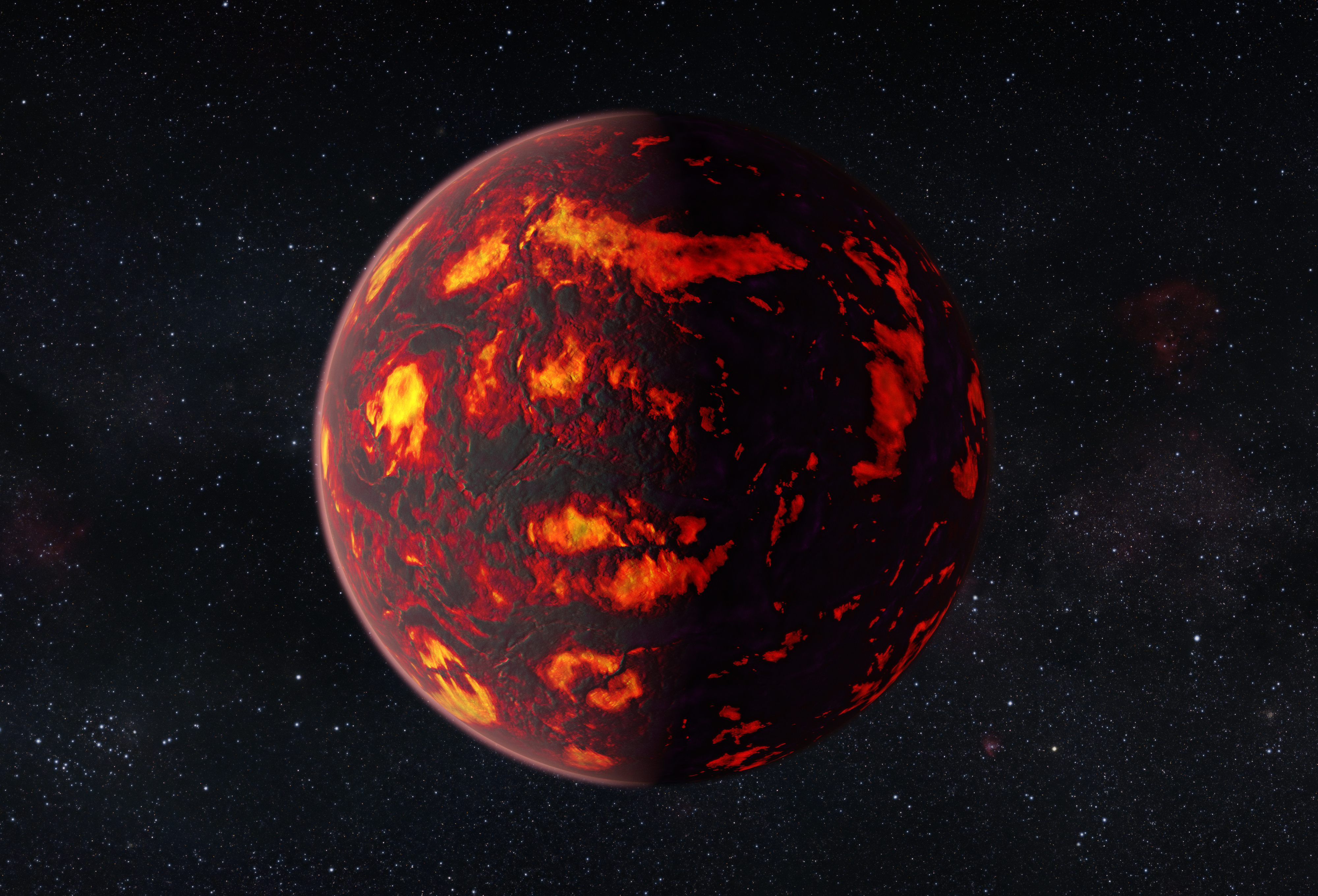
Experiments at the National Ignition Facility probe carbon at record pressures
Decades of studies have shown that carbon’s crystal structure has a significant impact on material properties. In addition to graphite and diamond, the most common carbon structures found at ambient pressures, scientists have predicted several new structures of carbon that could be found above 1,000 gigapascals (GPa). These pressures, approximately 2.5 times the pressure in Earth’s core, are relevant for modeling exoplanet interiors but have historically been impossible to achieve in the laboratory. That is, until now. Under the Discovery Science program, which allows academic scientists access to Lawrence Livermore National Laboratory’s (LLNL) flagship National Ignition Facility (NIF), an international team of researchers led by LLNL and the University of Oxford has successfully measured carbon at pressures reaching 2,000 GPa (5 times the pressure in Earth’s core), nearly doubling the maximum pressure at which a crystal structure has ever been directly probed.

National Ignition Facility conducts first-ever shot with explosives
The first-ever shot to study a high explosive sample was recently conducted at the National Ignition Facility, the world’s most energetic laser. The results from the shot included novel data that will help researchers unlock the mysteries of high-explosive (HE) chemistry and position Lawrence Livermore National Laboratory to continue its legacy as a leader in HE science and diagnostic innovation.
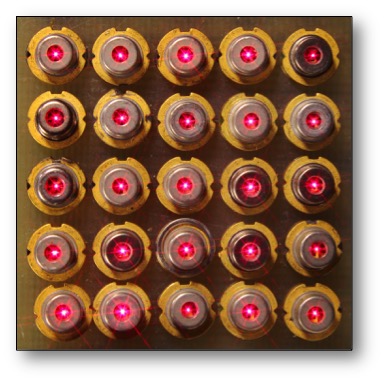
Breaking the Power & Speed Limit of Lasers
SUMMARYResearchers at the George Washington University have developed a new design of vertical-cavity surface-emitting laser (VCSEL) that demonstrates record-fast temporal bandwidth. This was possible by combining multiple transverse coupled cavities, which enhances optical feedback of the laser. VCSELs have emerged…
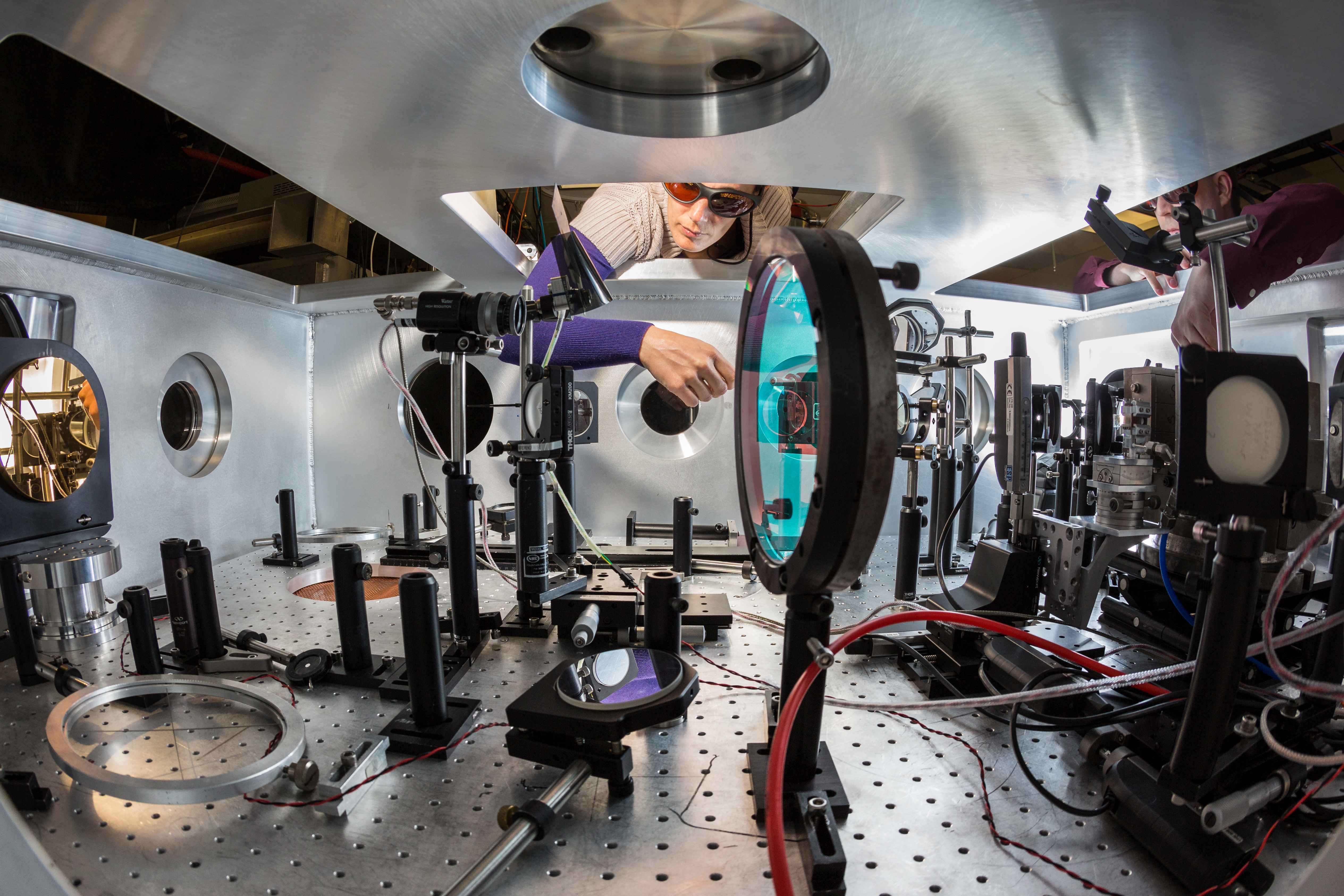
LaserNetUS high-power laser consortium receives $18 million from the Department of Energy
LaserNetUS, a network of facilities operating ultra-powerful lasers including those at Lawrence Livermore National Laboratory (LLNL), has received $18 million from the Department of Energy (DOE) for user support.
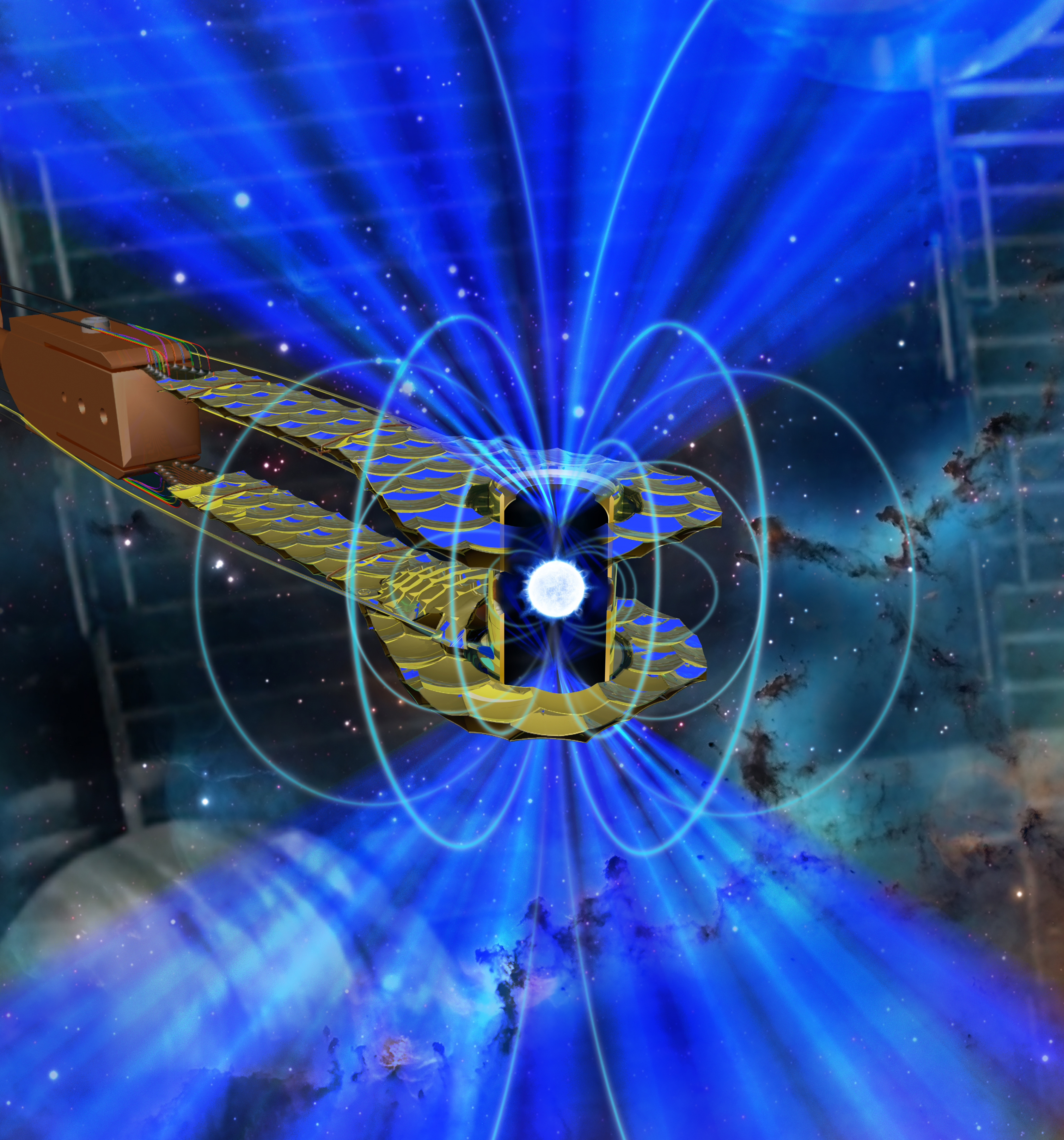
Record EOS measurement pressures shed light on stellar evolution
Using the power of the National Ignition Facility (NIF), the world’s highest-energy laser system, researchers at Lawrence Livermore National Laboratory (LLNL) and an international team of collaborators have developed an experimental capability for measuring the basic properties of matter, such as the equation of state (EOS), at the highest pressures thus far achieved in a controlled laboratory experiment. The results are relevant to the conditions at the cores of giant planets, the interiors of brown dwarfs (failed stars), the carbon envelopes of white dwarf stars and many applied science programs at LLNL. According to the authors, the overlap with white dwarf envelopes is particularly significant – this new research enables experimental benchmarks of the basic properties of matter in this regime. The results should ultimately lead to improved models of white dwarfs, which represent the final stage of evolution for most stars in the universe.
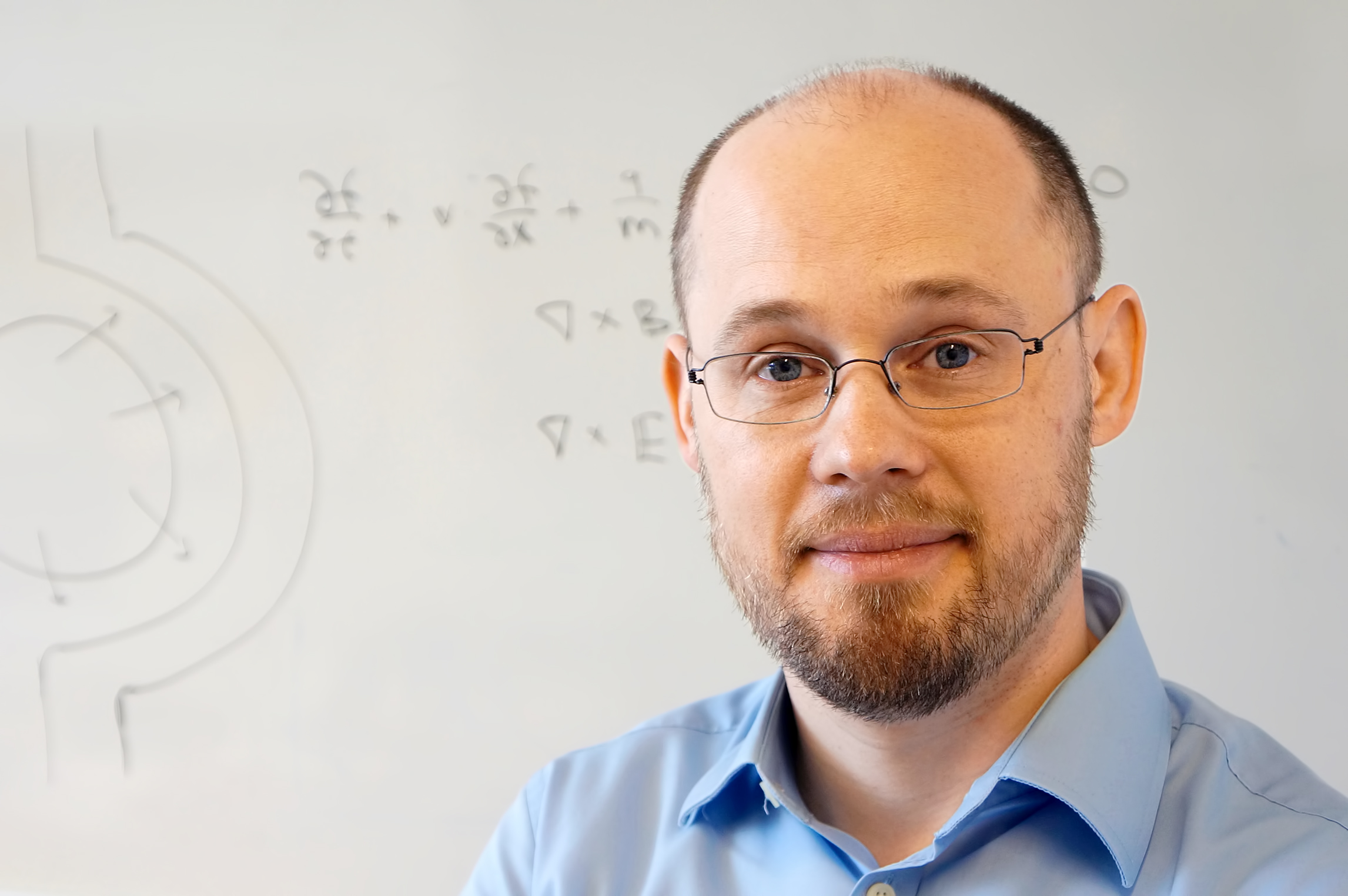
Will Fox wins 2020 John Dawson Award for producing new insights into astrophysical shockwaves
Profile of PPPL winner of APS Dawson Award for outstanding achievement in plasma physics research.
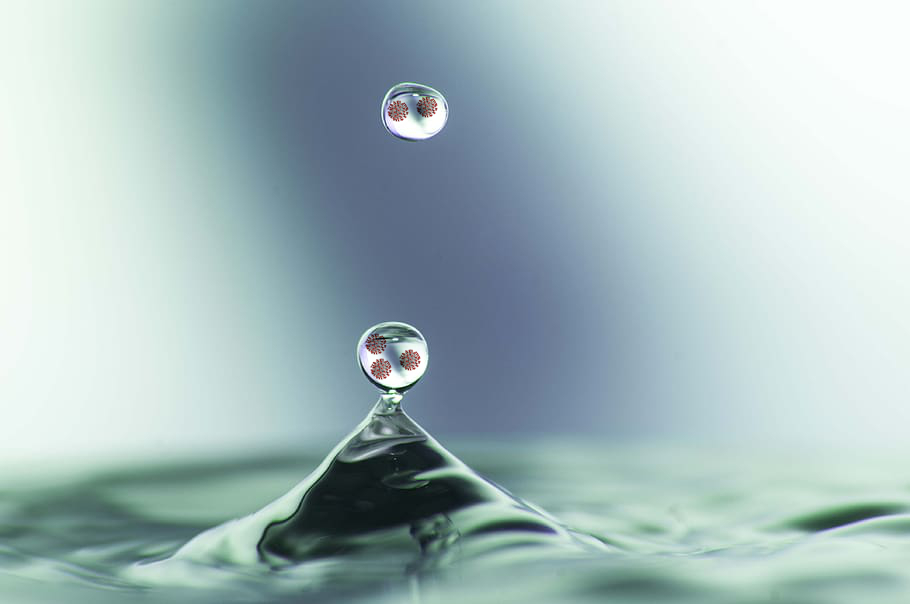
Laser, Biosciences Researchers Combine Efforts to Study Viruses in Droplets
Laser and biology experts at Berkeley Lab are working together to develop a platform and experiments to study the structure and components of viruses like the one causing COVID-19, and to learn how viruses interact with their surrounding environment. The experiments could provide new insight on how to reduce the infectiousness of viruses.
UCI physicists exploring use of Blu-ray disc lasers to kill COVID-19, other viruses
Irvine, Calif., May 19, 2020 – A new weapon in the arsenal against the coronavirus may be sitting in your home entertainment console. A team led by physicist Chris Barty of the University of California, Irvine is researching the use of diodes from Blu-ray digital video disc devices as deep-ultraviolet laser photon sources to rapidly disinfect surfaces and the indoor air that swirls around us.
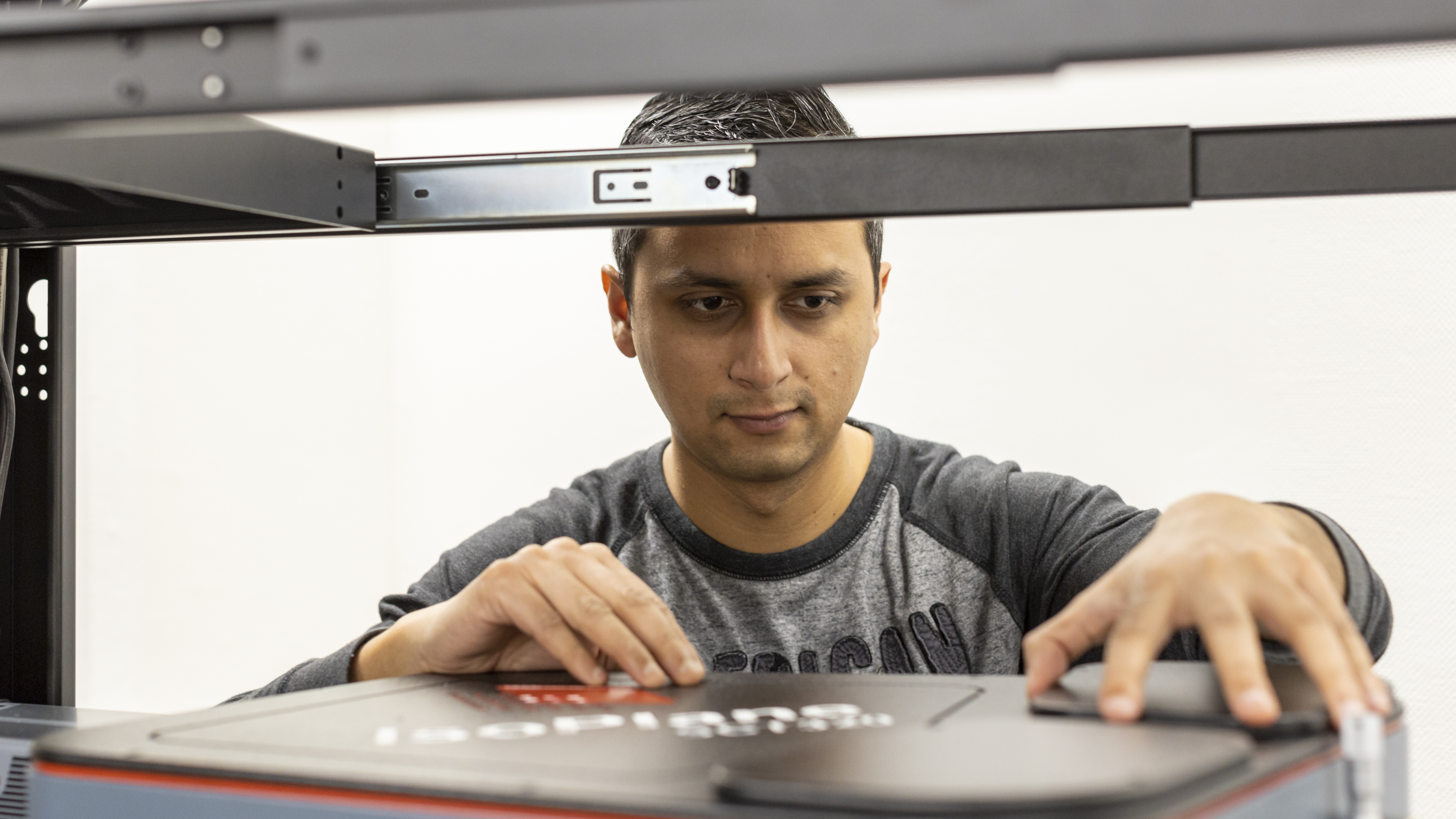
ORNL team builds portable diagnostic for fusion experiments from off-the-shelf items
The techniques Theodore Biewer and his colleagues are using to measure whether plasma has the right conditions to create fusion have been around awhile.
Nanospirals that form as molten metals solidify could be key to new materials—and even invisibility
Humans have been cooling metal mixtures from liquid to solid for thousands of years. But surprisingly, not much is known about exactly what happens during the process of solidification. Particularly puzzling is the solidification of eutectics, which are mixtures of two or more solid phases.
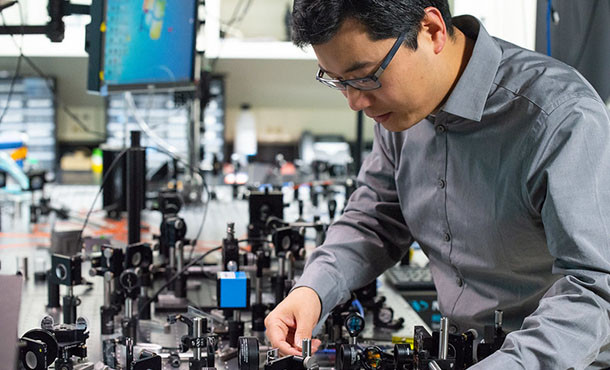
New method breaks the reciprocity of light propagation
Xingjie Ni, assistant professor of electrical engineering, has developed a novel method to break the reciprocity of light propagation, which will enable advancements in several scientific fields.
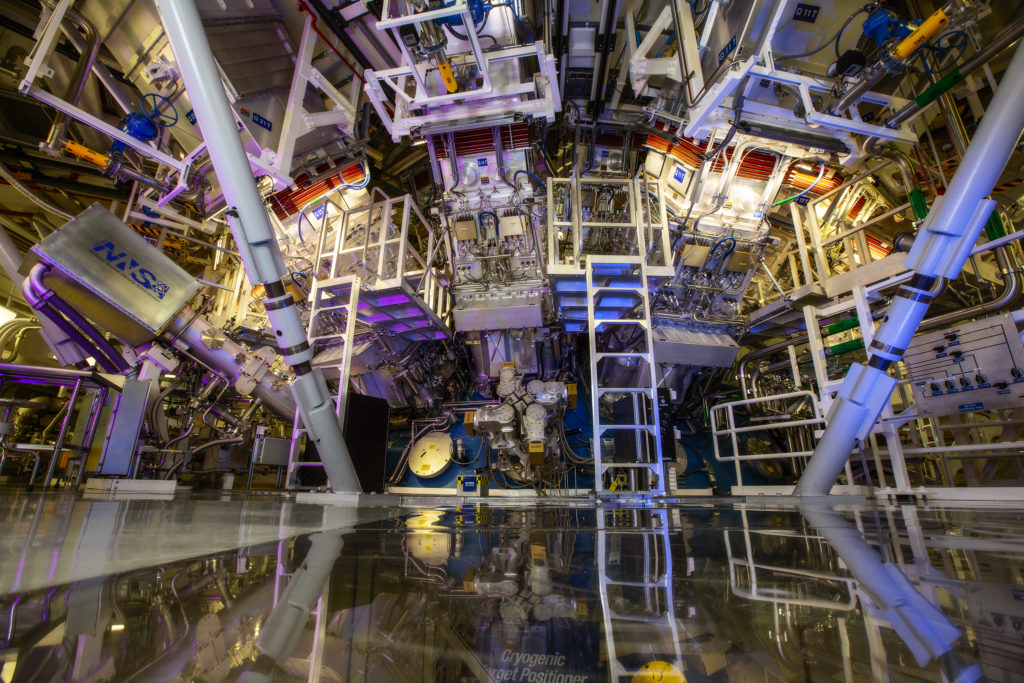
Under pressure: Researchers compress copper, creating the densest object on Earth
If copper was found in the core of Saturn it would have the same crystalline structure as the copper pipes found in many homes, according to new research from Lawrence Livermore National Laboratory (LLNL) and Johns Hopkins University.
In a paper published today by Physical Review Letters, the research team reveals that copper maintains its crystalline structure at pressures ranging from one atmosphere (room pressure) to more than 30 million atmospheres.
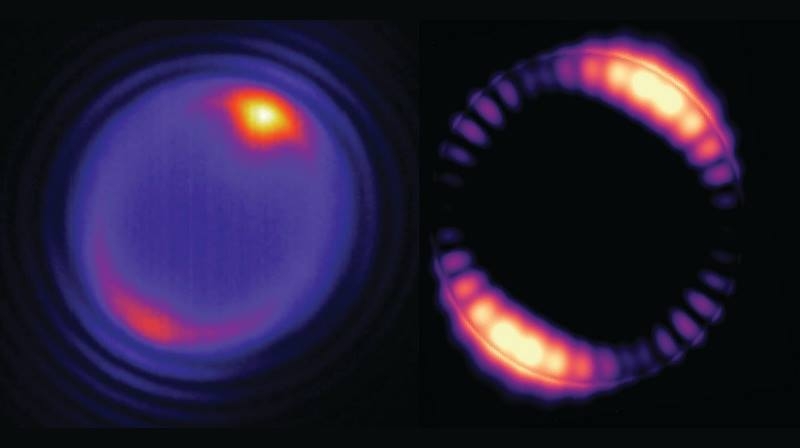
Scientists Create Tiny Lasers from Nanoparticles and Plastic Beads
Researchers found a way to create lasers smaller than red blood cells.

New Research Finds Lead Toughens Up Under Extreme Conditions
In a new paper published as an “Editors’ Suggestion” in Physical Review Letters, a team of researchers from Lawrence Livermore National Laboratory has demonstrated that lead – a metal so soft that it is difficult to machine at ambient conditions – responds similarly to other much stronger metals when rapidly compressed at high pressure.